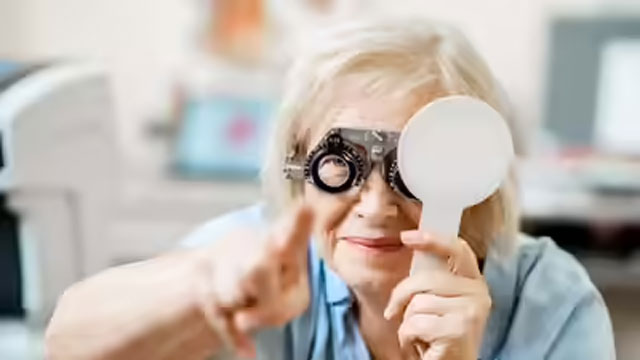Daijiworld Media Network - Mumbai
Mumbai, Nov 21: As the years pass, the human body undergoes numerous changes, and the eyes are among the first to reflect the impact of ageing. These shifts often begin subtly—sometimes so gradually that they go unnoticed—while in other cases, they may lead to more serious concerns. Recognising how vision evolves over time is vital for protecting eye health and ensuring a good quality of life. From mild blurriness to an increased likelihood of conditions such as cataracts or glaucoma, age-related changes are both normal and inevitable. With regular check-ups and proper care, many of these effects can be managed effectively.
One of the earliest and most noticeable age-related changes is presbyopia, a condition that typically emerges in the early 40s. As the eye’s lens loses elasticity, focusing on nearby objects becomes difficult. Everyday activities such as reading small print, checking messages on a phone or performing detailed tasks begin to feel more challenging. This natural change is easily managed with reading glasses, bifocals or multifocal lenses.

Another shift that accompanies ageing is the gradual reduction in pupil size. The muscles of the iris weaken over time, allowing less light to enter the eye. This makes dimly lit environments harder to navigate, and night-time driving becomes uncomfortable for many older adults. Brighter home lighting and anti-glare lenses often help reduce the strain.
Dry eyes also become increasingly common in later years. With a decline in tear production, the eyes may feel irritated, gritty or prone to burning sensations. Studies have shown that individuals above 60 face a significantly higher risk of dry eye disease due to changes in tear film stability and gland function. This condition is especially frequent in postmenopausal women, with hormonal shifts playing a major role. Simple steps such as staying hydrated, taking breaks from screens and using lubricating eye drops can offer considerable relief.
Beyond these natural changes, several eye conditions become more prevalent with age. Cataracts are among the most widespread, with nearly half of adults above 65 experiencing some level of clouding in the eye’s natural lens. Cataracts cause blurred vision, dull colours and sensitivity to bright lights. Fortunately, modern cataract surgery remains one of the most successful procedures in restoring clear vision.
Glaucoma is another serious concern. It refers to a group of diseases that damage the optic nerve, often due to increased eye pressure. People over 60 face a significantly higher risk, and the danger lies in the condition’s silent progression. Without regular eye exams, glaucoma may go unnoticed until permanent damage has occurred, making early detection critical.
Age-Related Macular Degeneration, commonly known as AMD, affects the retina’s central portion and causes distorted or blurred central vision. It is a leading cause of vision loss in older adults. Factors such as smoking, genetics and age increase the likelihood of developing AMD. While there is no cure, various treatments and lifestyle adjustments can slow its advancement.
Older adults also face a higher risk of diabetic retinopathy, especially as the incidence of type 2 diabetes rises with age. High blood sugar levels damage the retina’s blood vessels, leading to vision disturbances and potentially blindness if left untreated. Controlling blood sugar levels and undergoing routine eye screenings are essential to minimise complications.
Ageing may be unavoidable, but vision loss doesn’t have to be. With timely medical attention, healthy lifestyle habits and awareness of early warning signs, individuals can preserve their sight well into their later years. Regular eye examinations remain the most powerful tool in safeguarding vision, ensuring that the world continues to be seen with clarity and confidence at every stage of life.